he White House located at 1,600 Pennsylvania Avenue NW in Washington DC, was built between 1792 and 1800. One of the most fascinating facts in the history of America is the White House. This power house located at 1,600 Pennsylvania Avenue NW in Washington DC, was built between 1792 and 1800 of white-painted Aquia sandstone in late Georgian style and has been the official residence and principal workplace of every US president since John Adams.
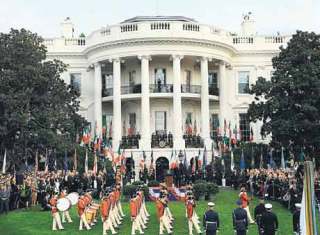
Although the White House is one of the most famous buildings in the world and hosts millions of visitors every year, very few people have a good understanding of its layout and history. The building was originally referred to as the 'Presidential Palace'. By 1811, the first evidence of the public calling it 'White House' emerged, because of its white-painted stone exterior. Here's a tour of this magnificent mansion and some interesting facts about its beautiful rooms.
Massive Structure
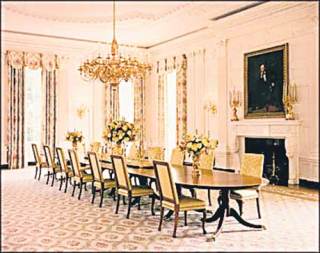
The White House consists of three major parts: East Wing, West Wing, and the Residence. The East Wing is two storeys high, with the Presidential Emergency Operations Centre beneath it. The West Wing is two storeys high with the White House situation room and other offices beneath it. The Residence is four storeys tall, with a basement and sub-basement, where various staff and maintenance facilities are located.
Red Room
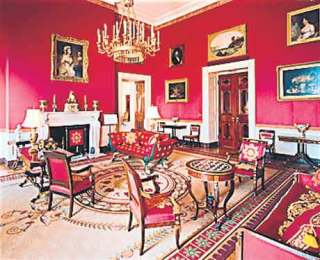
Furnished in the Empire style of 1810-30, the Red Room usually served as a parlour or sitting room. Recent presidents have had small dinner parties here. In 2000, the Red Room was refurbished, preserving the American Empire style chosen in 1962 during the Kennedy Administration. The elegance of the Red Room furniture derives from a combination of richly carved and finished wood in characteristic designs such as dolphins, acanthus leaves, lion's heads, and sphinxes. The furniture displays many motifs similar to those of the French pieces now in the Blue Room. The walls are covered by a red twill satin fabric with a gold scroll design in the borders. Some of the paintings in the Red Room today are available for viewing.
Library

In 1935, this room was remodelled as a library and in 1961, a committee was appointed to select works representative of a full spectrum of American thought and tradition for the use of the president, his family, and staff. This wide-ranging collection is still being augmented with presidential papers. The library is furnished in the style of the late Federal period (1800-1820) with most of the pieces attributed to the New York cabinetmaker, Duncan Phyfe. It is less formal than the rooms of the state floor and is often used for teas and meetings. The soft grey and rose tones of the panelling are complemented by a Tabriz carpet of the mid-19th century.
Entrance Hall
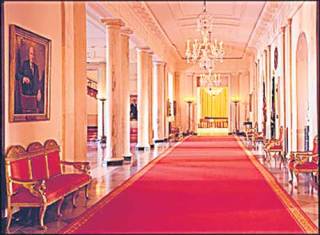
The large Entrance Hall and Cross Hall formed part of architect James Hoban's original plans for the White House. The basic design has not been altered, although modifications have been made during various renovations. The Entrance Hall is seen by visitors as they leave the White House. It is set off from the Cross Hall by a colonnade and is decorated in the same style — all made in marble and decorated with cut-glass chandeliers and bronze light standards . The centre and cross halls also serve as the visitors' exit for the White House Tour. Here visitors exit the main doors of the north entrance to the White House.
Green Room
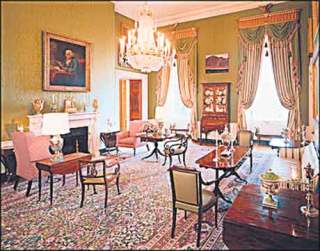
Although intended by James Hoban to be the common dining room, the Green Room has served many purposes since the White House was first occupied in 1800. Styles in the room changed as frequently as the tastes of the presidents. This room was completely refurbished in 1971. Its walls were re-covered with delicate green watered-silk fabric. Draperies of striped beige, green, and coral satin — a major part of the 1971 renovation — were carefully designed from a pattern shown in an early 19th-century periodical. The coral and gilt ornamental cornices are surmounted by a pair of hand-carved, gilded American eagles with outspread wings. The eagle, patriotic symbol of the United States, was one of the favourite decorative motifs of the Federal period. The walls of this room are covered with elegant paintings of various people and scenes.
No comments:
Post a Comment